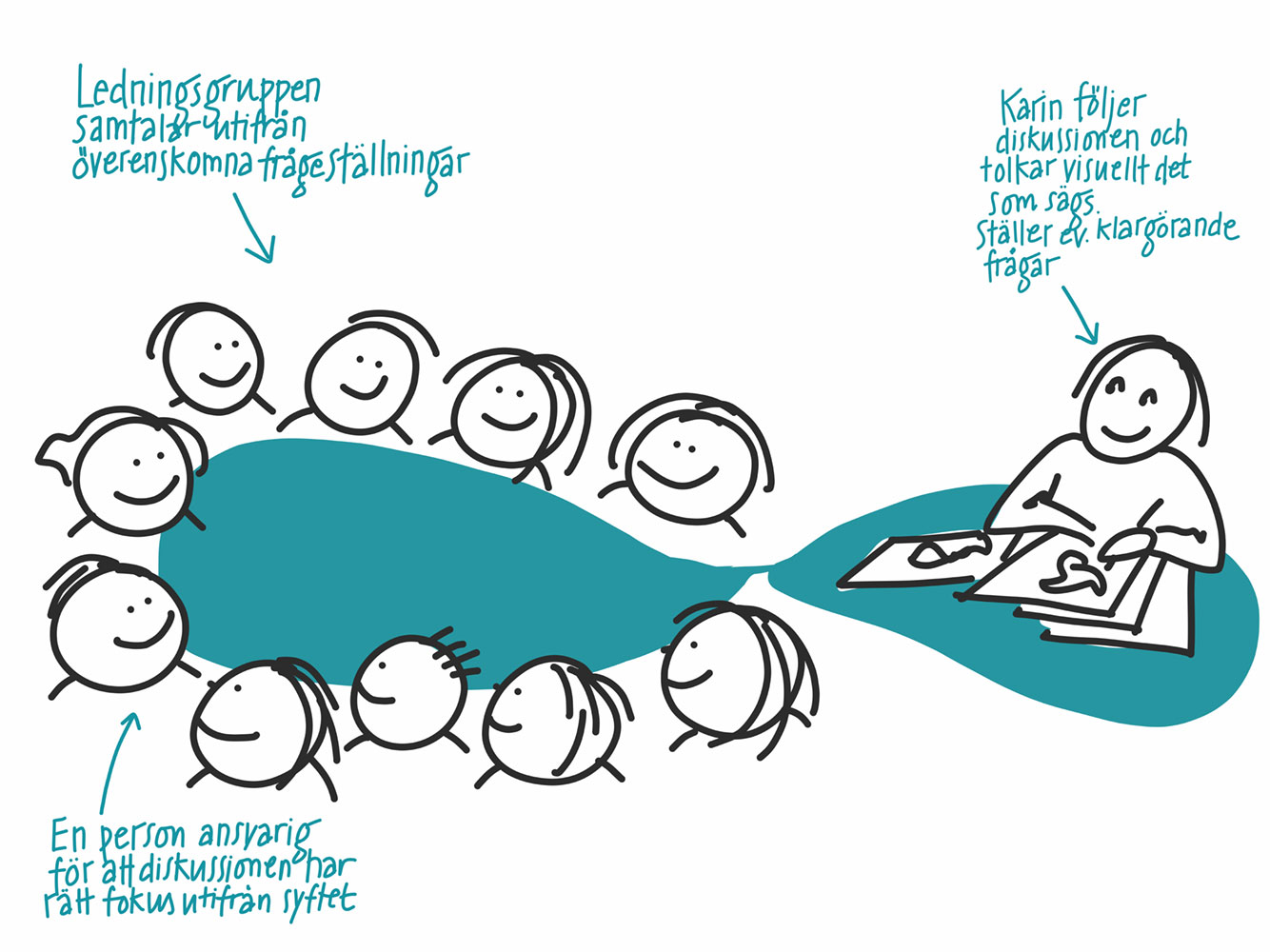GRAPHIC RECORDING
Graphic recording, visual documentation is documenting meetings and workshops by live illustrations, ie a kind of visual simultaneous interpretation of what is going on in the room. Everything from lectures to workshops can be visualized. The images that emerge on large papers or digitally from an iPad online, create increased understanding and give the participants a concrete memory of what they have been through and how to take the work process further towards the goals.
Graphic recording is as much about listening as it is about drawing. It is important to be able to listen in depth and understand the difference between facts and interpretation. What is the message?
Contact me for layout and a picture of your next meeting. What do you want to make visible?
Examples of areas: Vision work, innovation processes, research and development, goal and strategy work, business plan, values, analysis of the surrounding world, storytelling.

Graphic recording can be made on paper or on iPad.
Above: Episerver Ascend Nordic at Ericsson Globe, November 2016. Client: Creative Meetings.

Tired of never ending Powerpoint presentations at meetings and conferences? There are other ways to visualize your ideas. Using a graphic recorder who draws pictures of what is happening at the meetings is becoming more and more common.
Newspaper article in Swedish.
Graphic recording to support development processes.
Graphic recording can be done just as well on paper, as digitally and online.
The process for a digital graphic recording online can look like this.
1. Participants check in. I am connected ahead of time to have the technique in control.
2. Sometimes I work in the same room as the facilitator/moderator and the technical crew. All depending on set-up and purpose of the meeting.
3. At certain points of the meeting – spontaneously or planned – we show how the picture emerges. It is important for the understanding that the image is created in a process and collaboration with the participants. Nothing is pre-drawn except for possibly the headline.
4. During the processes in the breakout rooms I follow the conversations and capture the content in plenary.
5. The meeting usually ends with the client, the moderator and me reflecting on the picture. The final picture is a support in summarizing the day.
When I use graphic recording in development processes a set-up can look like this:
The group talks on the basis of agreed issues. It is important that a person is responsible for the process, ie the role of the facilitator. The facilitator is responsible for ensuring that the conversations have the right focus, that everyone is listended to and that different perspectives are given space. The facilitator can be internal or external.
While the group is discussing, I listen actively to what is being said and make visual notes on paper. Sometimes I ask clarifying questions.
Now it’s time for a visual feedback. My goal is for the
participants to recognize the discussion and the themes that have emerged.
All the sketches are placed on a table and the participants cluster the pictures based on what is important to explore. What do we see? What is missing? How do we talk? What are we not talking about? Is there a common thread?
This is the moment that we can see the grains of gold. In the visual feedback you see things that might have been forgotten in an ordinary conversation.



